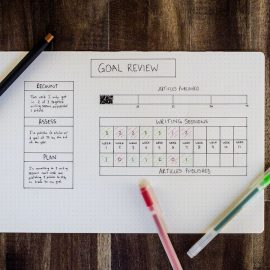

This article is an excerpt from the Shortform book guide to "Multipliers" by Liz Wiseman. Shortform has the world's best summaries and analyses of books you should be reading.
Like this article? Sign up for a free trial here .
Are you a Multiplier and looking to develop the talents of your team? Do you want to know the four best tips for multiplying talent?
In the book Multipliers, Wiseman explains that Multipliers are leaders who create talent development opportunities to level up their team. There are four practices that talent Multipliers use: acknowledge different kinds of intelligence, connect people to their native genius, help them use their genius, and remove any roadblocks in their way.
Continue reading to learn more about talent Multipliers and their techniques.
Talent Development Strategies
Talent Multipliers assume that if they can figure out what someone is naturally good at, they can use talent development strategies to guide this person to projects and roles in which they can contribute to their fullest and improve.
Multipliers create a cycle of attraction:
- They attract talented people.
- They recognize people’s talent and develop it.
- These talented people are offered new opportunities, sometimes at different companies. This gives the Multiplier’s team a reputation for being a good place to get started.
- This reputation attracts new talent, which replaces outgoing talent.
Multipliers can boost anyone’s talent, not just A players’, because they know that while everyone has different levels of ability, everyone can improve.
Four Habits or Practices of Talent Multipliers
Talent Multipliers use four practices to improve the performance of others:
Search Widely
Multipliers are open-minded about intelligence so they look for it beyond the obvious places. They:
1. Acknowledge that there are different kinds of intelligence. IQ is what most people think of when it comes to intelligence. Some people are good at the skills that can be measured by standardized tests, such as math or verbal reasoning, but others are good at being creative, identifying problems, or finding innovative solutions.
- For example, Intuit CEO Bill was a football coach and economics major who led technologists in Silicon Valley. He admitted that technologists thought differently, listened to their thought processes, and asked them to teach him.
2. Look anywhere and everywhere for talent. Multipliers ignore organizational charts. They don’t look at whether someone is completing her job description; they look at how they might use her to get things done. Multipliers believe that if they can find someone’s genius, they can use that person—even if that person doesn’t technically report to them—because people like to use their genius.
Additionally, Multipliers look for talent outside of their organization—they look for new grads and people who work for the competition.
- As an extreme example, one CEO signed up as an Uber driver and waited outside his competitor’s building for employees to request rides. Once they were in the car with him, he’d start a conversation and try to find out what they were good at.
Connect People With Their Native Genius
A “native” genius is a skill someone can do very well without expending any effort or having to be prompted. Using this talent is so easy and satisfying people will use it voluntarily.
Multipliers use two steps to connect someone to their native genius:
1. Identify it. They ask what their target:
- Does enthusiastically, without being asked or paid for
- Does best
- Does better than everyone else
- Does easily
- Thinks anyone can do
To practice this technique, look for native genius in a small sample by focusing on just one person on your team, ideally, someone you have trouble working with or whom you don’t think is smart. Then, once you’re more comfortable spotting genius, assemble your management team and identify every team member’s genius together.
When it comes to bottom performers, accept that not everyone will reach the same level, but everyone has some form of genius and everyone can improve. To multiply bottom performers:
- Assume they can be a top performer and look for their genius the same way you would for top performers. Sometimes, believing in them is all the kick they need.
- Be patient. Many low performers have become that way because they’ve been working for Diminishers. It might take some time for them to trust you.
- Be aware that you always have the option to move people if they’re not succeeding in their current environment.
2. Tell the person about their native genius and help them name it. Because native genius is so effortless, many people don’t know what theirs is. Multipliers consult individuals and the wider team about what to name their genius so they can start using it more deliberately.
- For example, when the author was in cross-functional meetings and they ground to a halt, Multipliers often asked her to lead the meeting and straighten things out. When she asked someone why she kept being asked to do this, even though it wasn’t her job, he told her it was because she was good at identifying the problem, summarizing people’s ideas and solutions, and making a plan. Until this point, she hadn’t even realized this was a skill—it felt like breathing and she assumed anyone could have done it.
Help People Use Their Genius
Multipliers help people find a way to use their genius in two ways. They:
1. Put them in a position or on a project that requires their genius. This doesn’t have to be part of a formal job description—Multipliers sometimes assign someone to a project or responsibility that’s outside of their job requirements.
- For example, an assistant superintendent was working on a pilot project to include more technology in classrooms. She paid attention to all the teachers’ strengths and noticed that Courtney naturally jumped in whenever things got messy or complicated and needed troubleshooting. So, she assigned Courtney to navigating complexity.
> Workout #1: Assess the genius of everyone on your team (expect everyone’s to be different) and choose two people who you think are ready for a challenge. Give them some responsibilities that are just outside their current abilities, acknowledging that the project or role might feel too big initially, but that you’re confident they’ll grow into it. Continue to maintain space between their skills and the projects you assign you.
> Then, do the same for everyone on the team.
> (Shortform note: These workouts will come up throughout the book, and we’ve boxed them so they’re easier to refer back to.)
2. Publicly acknowledge their genius. This reinforces your belief and confidence in their talent.
- For example, camp director Marguerite runs a girls’ camp in California. All of the camp counselors are volunteers and Marguerite studies all 59 of them figure out their genius. Once she figures it out, she tells the counselors what their talent is and how it will make the camp better. When she introduces counselors to each other, she mentions their genius, and she praises people when they do good work.
> Workout #2: Get your whole team involved in the search for native genius. Ask everyone to try to identify the native genius of everyone else. Then, bring everyone together and discuss each person, one at a time, talking about what they think their genius is, what other people think it is, and how it could be used.
Clear the Path
In addition to supporting people’s genius, Multipliers remove roadblocks to their success. Often, these roadblocks are other people in an organization. Multipliers:
1. Remove non-team players and Diminishers. Even if someone is very smart, if they diminish those around them, the overall effect is negative. (For example, if there are ten people on a team that only work at 50% because they’re being diminished by one person, they’re completing the equivalent of five people’s work. If a Multiplier removes the Diminisher and the remaining nine people work at 100%, they’re completing the equivalent of nine people’s work.) Removing someone doesn’t necessarily mean firing them—removing them from a leadership position and isolating them so that they can’t do damage or produce more Diminishers is effective, too.
- For example, one of Bloom Energy’s employees, Stefan, was unwilling to work with anyone else on his team. Stefan was a top scientist and the leading expert on a critical technology, so he was important to the company, but his boss knew the team was more important than one person. When Stefan refused to collaborate, his boss let him go. His boss then explained to the team why he’d made this decision, and the team was so impressed that they worked extra hard to get the project done without Stefan.
2. Avoid being a roadblock. Sometimes, the leader is the person getting in the way of people using their genius—for example, a leader might be overinvolved in other people’s work or try to retain them after they’ve outgrown their role or even the company.
- For example, one VP told her people to ignore her when they needed to so they could get their work done. She admitted that she might do jobs differently than they did, but she would get over it.
To practice this technique, when someone needs to leave your organization to keep developing their talent, encourage them to go. Support their quest for new challenges by recommending new avenues, writing reference letters, and celebrating their success when they leave.
Talent Diminishers
In contrast to talent Multipliers, talent Diminishers assume people need their direction to get anything done. They don’t use or develop talent; instead, they collect it and use it to make themselves look good—for example, by taking credit for other people’s work and accomplishments.
They create a cycle of decline:
- They attract talented people.
- They don’t use people’s talent—they just slot people into an organization chart, which discourages them from playing to their strengths and leaves them doing generic tasks.
- These talented people don’t get to use their skills and lose confidence. They don’t get any opportunities. This gives the Diminisher’s team a reputation for being a “career killer.”
- This reputation discourages people from joining the team.
Three Habits of Talent Diminishers
So, what do Diminishers do differently?
Collect Resources
Diminishers don’t develop people; they simply collect them and then show them off in an organizational structure in which everyone reports to them (the Diminisher).
- For example, Jasper managed 1,000 people (but they only got as much done as 500 because he was a micromanager) and he wanted more. He competed with another department for resources, created a redundant infrastructure, and even got an office tower for his division to show off.
(Note: Diminishers’ names and company names have been changed to protect their privacy.)
Delineate Job Descriptions
Diminishers don’t allow people to move beyond their job descriptions, so only one person is responsible for each area and there’s no collaboration. Their meetings tend to be one-on-one, or in larger meetings, people report on their areas rather than work together.
- For example, one manager made his decisions over the weekend and had one-on-one meetings on Friday. Whoever talked to him last on Fridays had the most influence, and his staff competed with each other instead of collaborating.
Underuse Talent
Diminishers don’t develop talent. Sometimes, this is because it never occurs to them to do so; other times, this is so they can keep the spotlight on themselves. Unlike Multipliers, they don’t clear the path of obstacles to people’s success, such as non-team players.

———End of Preview———
Like what you just read? Read the rest of the world's best book summary and analysis of Liz Wiseman's "Multipliers" at Shortform .
Here's what you'll find in our full Multipliers summary :
- Why multipliers make better leaders than diminishers
- How multipliers increase the total intelligence and capability of a team
- The 3 steps to follow if you want to reduce your own diminishing qualities







Very well article. I enjoined reading even the free section. Thanks